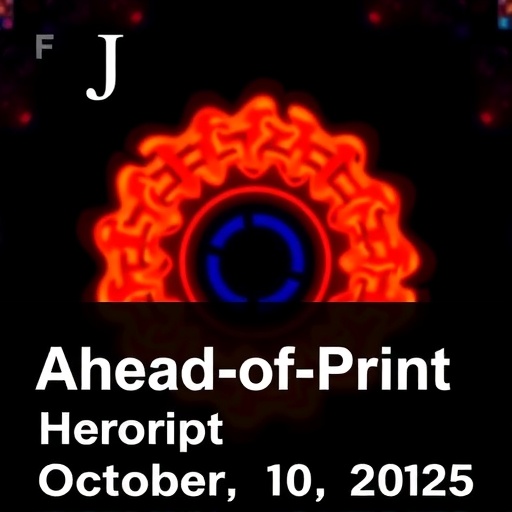Reston, VA (October 10, 2025)—Groundbreaking advancements in nuclear medicine and molecular imaging have recently been unveiled in ahead-of-print publications by The Journal of Nuclear Medicine (JNM), a globally respected platform dedicated to pioneering studies in this transformative field. These new research findings demonstrate how precision molecular imaging techniques are revolutionizing diagnostic accuracy and therapeutic strategies in complex cancers such as prostate, pancreatic, and kidney tumors, potentially reshaping clinical practices worldwide.
One pivotal study emerging from the ProsTIC registry delves into the therapeutic efficacy of ^177Lu-PSMA-617, a radioligand therapy targeting the prostate-specific membrane antigen (PSMA) in men with advanced prostate cancer. Intriguingly, this research highlights that nearly 50% of patients who do not exhibit an early reduction in prostate-specific antigen (PSA) levels following the initial treatment cycle still experience notable PSA declines and symptomatic relief with continued therapy. This finding challenges the conventional reliance on early PSA metrics as the sole indicator of treatment response, underscoring the necessity for clinicians to consider sustained PSMA-targeted interventions before modifying therapeutic plans.
Meanwhile, progress in imaging modalities for pancreatic ductal adenocarcinoma has been demonstrated through the application of ^68Ga-FAPI PET/CT scans. This innovative technique targets fibroblast activation protein inhibitor (FAPI), a marker highly expressed in pancreatic tumor stroma, enabling enhanced visualization of occult metastatic lesions that are often undetected by standard computed tomography (CT) scans. Remarkably, nearly one-third of patients exhibited hidden metastases identified by FAPI PET/CT, advocating for its integration to prevent unwarranted surgeries and enabling more nuanced treatment stratification based on tumor biology and aggressiveness.
In the realm of renal oncology, a new procedural guideline illustrates how molecular imaging advances are refining the differentiation of malignant kidney tumors from benign lesions. The guideline articulates the complementary use of CAIX-targeted tracers such as ^89Zr-girentuximab combined with mitochondrial-accumulating agents like ^99mTc-sestamibi. These tracers exploit distinct physiological features—CAIX expression linked with tumor hypoxia and mitochondrial activity reflective of cellular metabolic states—to achieve superior diagnostic precision. Further, artificial intelligence-driven image analysis heralds a new era for enhancing interpretative accuracy and predicting tumor behavior, signaling a future where computational pathology converges with molecular imaging.
Another study examining patients newly diagnosed with high-risk prostate cancer reveals the transformative capability of ^18F-PSMA PET/CT imaging. This advanced technique unveiled previously unrecognized metastatic involvement, particularly in lymph nodes, in roughly 25% of cases when compared with conventional bone scintigraphy. The enhanced metastatic detection precipitated significant changes to treatment regimens in over 10% of patients, illustrating the pivotal role of precise imaging in contouring personalized management strategies and potentially improving oncologic outcomes.
Collectively, these research endeavors underscore the profound impact of molecular imaging and theranostics—precision medicine approaches that enable tailored diagnostics and therapeutics—on contemporary oncology. By integrating targeted radiotracers and sophisticated imaging technologies, clinicians are better positioned to characterize tumor heterogeneity, monitor therapeutic responses accurately, and optimize individualized patient care. The fusion of such modalities represents a paradigm shift in cancer management, facilitating earlier detection, judicious intervention, and improved prognostication.
The cumulative advancements showcased in recent publications also emphasize a growing synergy between imaging biomarkers and computational tools such as artificial intelligence. This integration offers the potential to surpass human interpretative limitations, enabling automated lesion characterization, quantification, and therapeutic prediction. As machine learning algorithms evolve, their application to multimodal molecular imaging data promises to accelerate precision oncology research and clinical translation.
The Journal of Nuclear Medicine continues to serve the international scientific community by disseminating seminal research that pushes the boundaries of nuclear medicine and molecular imaging. As these novel imaging agents and methodologies transition from research settings into clinical practice, their adoption could significantly enhance patient stratification and therapeutic outcomes across diverse malignancies. The Society of Nuclear Medicine and Molecular Imaging (SNMMI), the publisher of JNM, remains at the forefront of these advancements, fostering collaboration and innovation in this dynamic domain.
Patients, clinicians, and researchers alike stand to benefit from these newly reported insights as they inform decision-making processes, challenge existing paradigms, and stimulate further inquiry into the biologic underpinnings of cancer. The ongoing evolution of molecular imaging promises to unlock deeper understanding of tumor pathophysiology, create more effective theranostic pathways, and ultimately improve survival and quality of life for patients worldwide.
For detailed information on these studies and more, readers are encouraged to visit the Journal of Nuclear Medicine’s official website and follow their social media platforms on Twitter, Facebook, and LinkedIn, where updates on the latest nuclear medicine research are regularly shared. Further resources and media support are available through the SNMMI Media Center, offering invaluable tools and contacts for those seeking expert commentary and interviews with the researchers behind these impactful studies.
As the sphere of molecular imaging expands rapidly, embracing emerging technologies and cross-disciplinary collaborations, it is poised to redefine the future landscape of cancer diagnosis and treatment. These exciting developments herald a new chapter in precision medicine, bringing us closer to an era where personalized, image-guided therapeutic interventions become the standard of care.
Subject of Research: Molecular imaging advancements and theranostics in oncology, focusing on prostate, pancreatic, and kidney cancers.
Article Title: Many Patients Benefit from Continuing PSMA Therapy Despite Early PSA Rise; New PET/CT Scan May Improve Surgery Decisions in Pancreatic Cancer; New Procedure Guideline Highlights Molecular Imaging Breakthroughs for Kidney Tumors; Advanced PSMA PET/CT Scan Changes Treatment Plans for High-Risk Prostate Cancer.
News Publication Date: October 10, 2025.
Web References:
https://doi.org/10.2967/jnumed.125.270804
https://doi.org/10.2967/jnumed.125.270510
https://doi.org/10.2967/jnumed.125.271332
https://doi.org/10.2967/jnumed.125.270822
Keywords: Molecular imaging, Medical imaging, Positron emission tomography, PSMA therapy, ^177Lu-PSMA-617, ^68Ga-FAPI PET/CT, ^89Zr-girentuximab, ^99mTc-sestamibi, Artificial intelligence, Theranostics, Prostate cancer, Pancreatic ductal adenocarcinoma, Kidney tumors.




